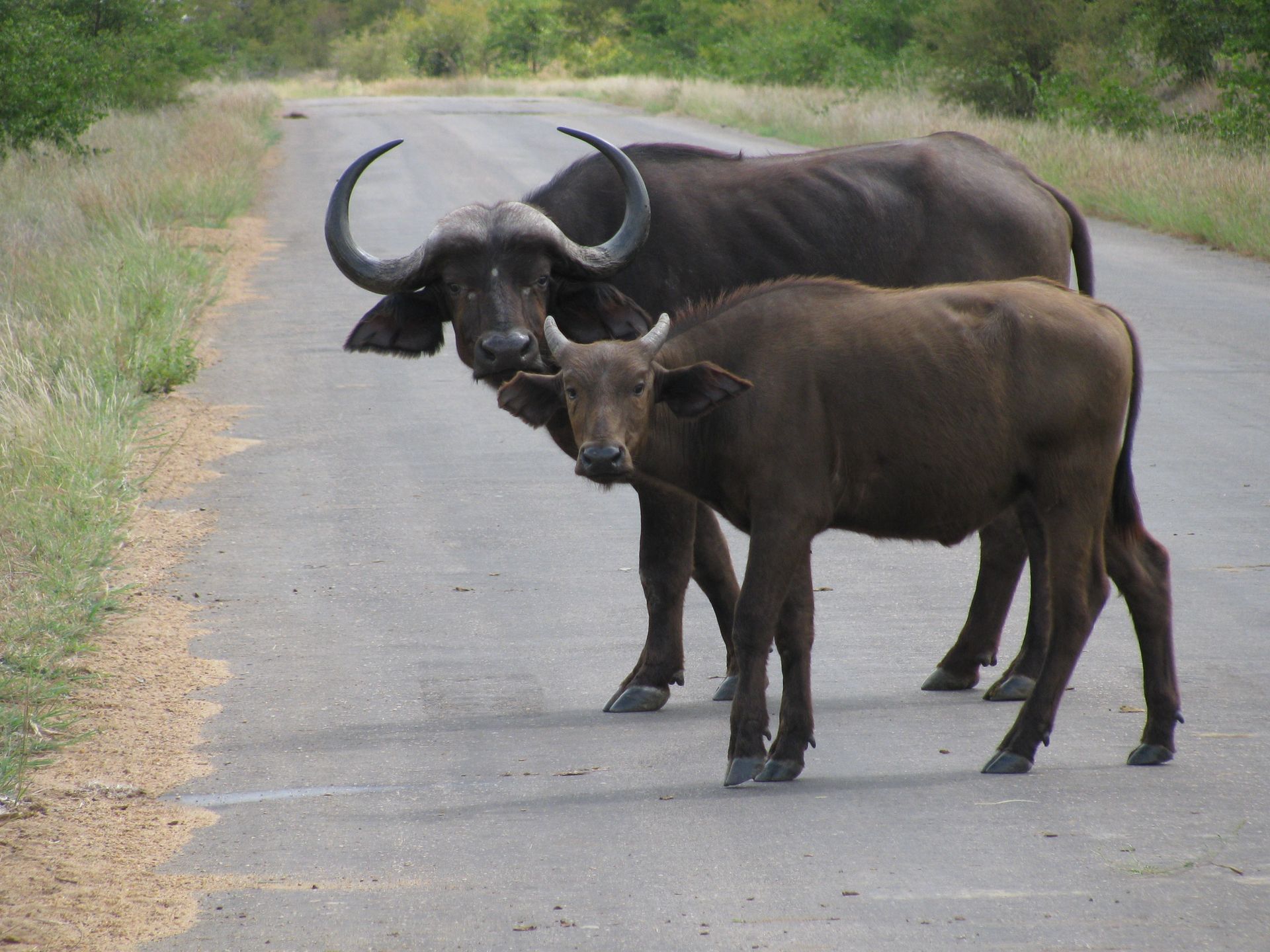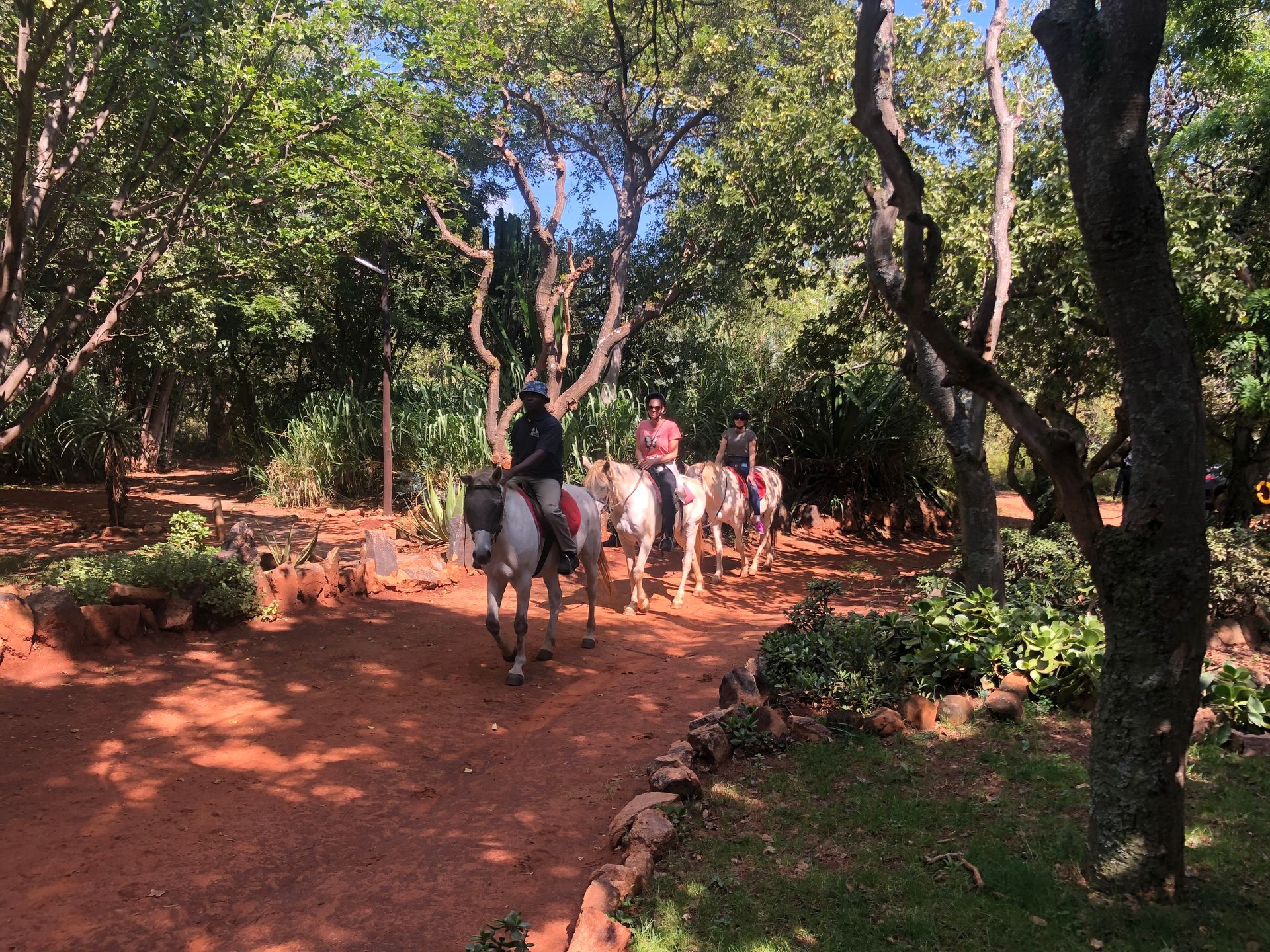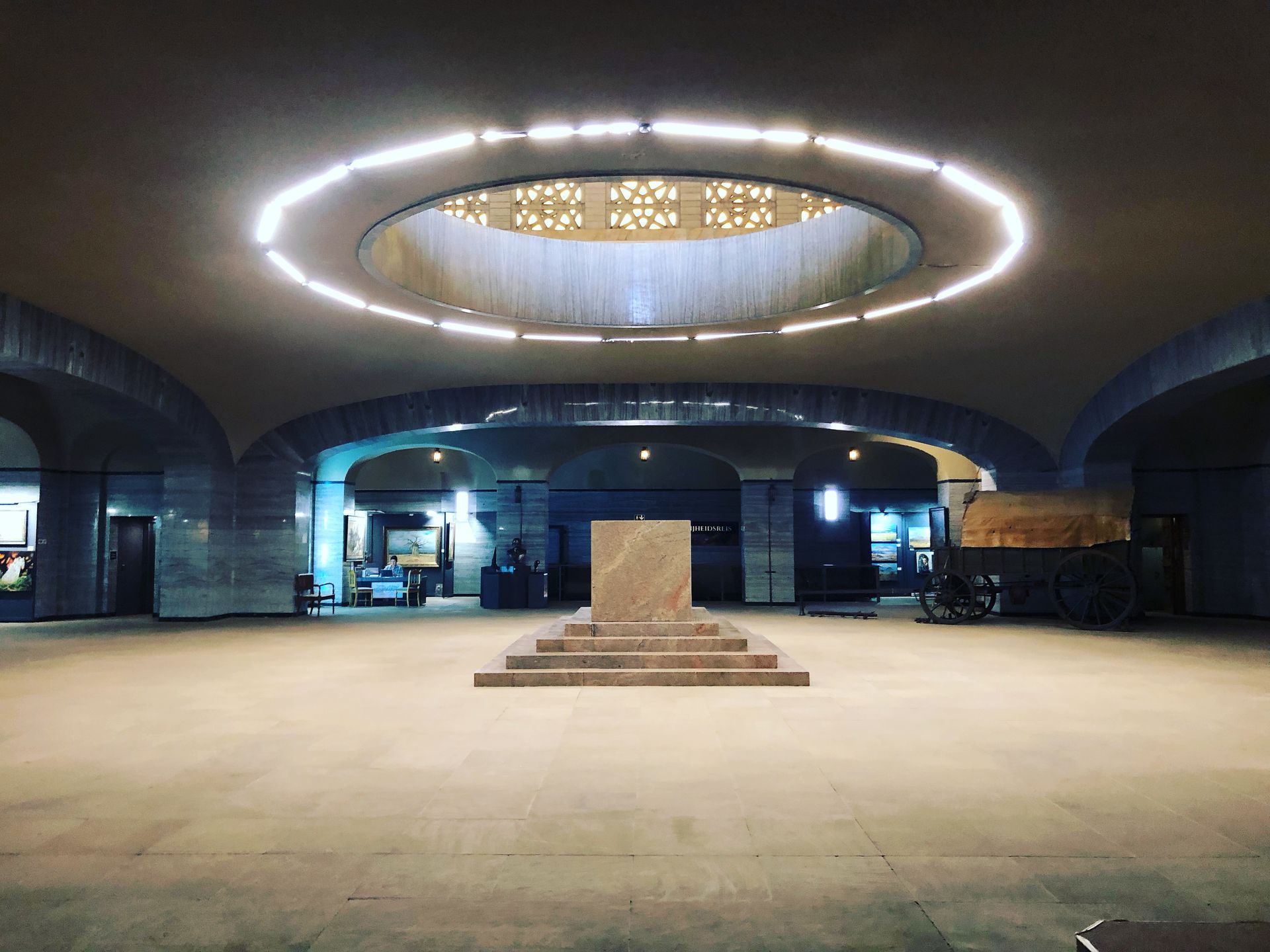Pilanesberg Safaris from Johannesburg
Experience a Pilanesberg Safari
Pilanesberg Safaris
When visiting Johannesburg, travelers sometimes overlook a fascinating place called Pilanesberg. Overshadowed by the famous Kruger National Park. But if you have little time, then a safari to Pilanesberg National Park might just be what you need. One thing that makes Pilanesberg such a nice reserve to visit is that it is not a malaria area. Malaria medication is recommended for visitors to Kruger National Park. The reserve is an extinct volcano, so you get fantastic views as you drive around between beautiful hills.
Are you dreaming of an adventure that gets your heart pounding and brings you up close and personal with the wild? If the answer is a resounding yes, then buckle up, for I'm about to take you on a virtual tour of a thrilling safari in the heart of South Africa’s pristine wilderness - the Pilanesberg National Park.
Let's start from the beginning. You've just checked in to your hotel in Johannesburg and can't wait to plunge into the wilderness. Fret not, because Deeprift Ventours, one of South Africa's premier travel and tour operators, is ready to whisk you away on an unforgettable journey. Renowned for their seamless services, they'll pick you up directly from your hotel, ensuring your comfort and safety are paramount.
As you journey to the Nature Reserve, you'll be treated to the stunning vistas of the South African landscape, a feast for the eyes and a perfect appetizer for the adventure that awaits. Once you arrive at Pilanesberg National Park, you'll switch to an open safari vehicle - the excitement begins!
Pilanesberg National Park is a true gem, nestled in the crater of an extinct volcano, boasting a rich array of wildlife and magnificent geological features. As you traverse the park in the open vehicle, you'll feel a thrilling connection to nature, and with the wind in your hair, you'll set off to meet the incredible wildlife residents.
Keep your cameras ready, because Pilanesberg is home to the 'Big Five' - lion, leopard, rhinoceros, elephant, and Cape buffalo. But the spectacle doesn't stop there. Antelopes gracefully hopping around, zebras flaunting their unique patterns, and giraffes reaching for the treetops, it truly is a sight to behold!
And it's not just about the animals. The park's unique ecosystem supports a diverse birdlife, making it a paradise for bird-watchers. You'll see everything from majestic eagles soaring in the sky to vibrant kingfishers perched on the banks of the park's water bodies.
After the end of a full day of Safari, you will once again return to your closed mini bus vehicle and transported safely back to your hotel in Johannesburg.
Pilanesberg National Park's History:
The creation of Pilanesberg National Park is a tale of foresight, cooperation, and tenacity. A group of environmentalists and conservationists realized the need for a wildlife reserve in the area in the 1970s since it was being threatened by mining operations and human encroachment.
The team began looking for a potential location for the park under the direction of Dr. Ian Player. They settled on a large plot of land in the North West province, where mining had once been practiced but had since been abandoned. The area, which featured a varied topography of hills, valleys, and marshes, was ideal for a wildlife reserve.
Yet, starting from scratch to build a park wasn't simple. Many obstacles had to be overcome by the team, such as inadequate money, a dearth of infrastructure, and opposition from local communities that had been uprooted during the apartheid era.
Despite these challenges, the team persisted and worked relentlessly to realize their vision. To create roads, lodges, and other necessary infrastructure, they obtained funds from a number of sources, including the government and individual donations. They also solicited the assistance of the local communities.
The team's struggle to reintroduce wildlife to the park was perhaps its biggest obstacle. Several species had been eradicated or hunted to extinction by humans over the years. The crew started a program of relocating animals from other reserves because they were determined to return the park to its natural state.
The park started to prosper over time. There was a flourishing population of lions, elephants, rhinos, and other animals, and tourists from all over the world went there to view the amazing wildlife and breathtaking scenery. Pilanesberg National Park is one of South Africa's best-known and most beloved reserves today, which is a monument to the foresight and tenacity of its creators.
It is obvious from looking back that creating Pilanesberg National Park was no small accomplishment. It required the commitment of a team of enthusiastic people who were dedicated to upholding the region's natural beauty and safeguarding its species. The park serves as a living memorial to them and a brilliant illustration of what can be accomplished when people work together to construct something really unique.
Information about the Lodges in Pilanesberg: Pilanesberg National Park, one of South Africa's top wildlife sites, attracts international visitors. The park has a wide variety of animals and birds, including the Big Five (lions, leopards, elephants, rhinos, and buffaloes). Each park lodge is unique and wonderful.
Bakubung Bush Lodge is a Pilanesberg favorite. This resort in the park offers magnificent accommodations and some of the greatest game watching in the vicinity. The lodge provides game excursions, bush walks, plus a spa, pool, and restaurant.
Ivory Tree Game Lodge is another Pilanesberg favorite. This lodge offers a comfortable and personal safari in a magnificent setting. The lodge's air-conditioned, comfortable suites mix nicely with the natural surroundings and have private patios. The lodge has a spa, pool, restaurant, and guided game drives and bush walks.
Pilanesberg visitors also enjoy Kwa Maritane Bush Lodge. This high lodge has spectacular park views. The lodge has a spa, pool, restaurant, and spacious, pleasant rooms with air conditioning, mini-bars, and private balconies. Guided wildlife drives and bushwalks are provided.
Finally, the Shepherd's Tree Game Lodge in southern Pilanesberg National Park is sumptuous. The resort has suites, villas, and a presidential suite with air conditioning, private decks, and other facilities. The lodge offers guided wildlife drives, bush walks, a spa, pool, and restaurant.
Pilanesberg lodges offer magnificent and amazing experiences. Pilanesberg lodges offer pleasant stays or thrilling safaris.
Some information about the big five:
Lions: Lions are famous for being the "lord of the jungle." The manes, roars, and strength of these enormous animals are legendary. This essay will provide some amazing lion facts.
Lions are the only felids that live in prides. Females, cubs, and a few males make up these groupings. Males guard the pride's territory and the females and cubs from predators.
Male lions utilize their manes to impress females and frighten rivals. Age, health, and genetics affect lion mane color and thickness. In India, male lions are generally maneless.
Lions are top predators. They eat wildebeest, zebras, and buffalo. They also hunt hares and birds.
Lions are skilled nocturnal hunters. They catch and bite their prey using their keen claws. Lions can kill creatures four times their size, and the pride works together to kill larger animals.
Poaching, habitat decline, and human-wildlife conflict threaten lions. Over the past 21 years, African lion numbers have plummeted 43%, making them "threatened" on the IUCN Red List of Endangered Species.
In conclusion, lions are amazing animals that captivate people worldwide. They're formidable hunters with a distinct social structure. We must protect these amazing species and their ecosystems from major threats.
Leopard: Panthera pardus, the leopard, is a sleek, huge cat found in Africa and Asia. Its beautiful fur coat with rosette-shaped patches helps it blend in.
Leopards are solitary and elusive, spending the day in trees or caves and hunting at night. They hunt antelopes, deer, monkeys, goats, and sheep as opportunistic predators. They can climb trees and haul prey up to avoid other predators.
Leopards are medium-sized, powerful cats with long tails. They weigh 60–200 pounds, with males being heavier. African leopards are golden-yellow and Asian leopards are pallid.
Leopards are the most versatile big cats, surviving in forests, savannas, mountains, and deserts. In recent years, habitat degradation and poaching have endangered several leopard populations.
Leopards represent strength and agility in many cultures despite their elusiveness. They appear in folklore, literature, and art and have been hunted for their fur and trophies. To preserve leopard populations, efforts are being made now.
Buffalo: Cape Buffalo, also known as African Buffalo, are large, powerful bovines from sub-Saharan Africa. They are known for their unique appearance and dangerous reputation.
Cape buffaloes weigh 500–1000 kg and stand 1.5 meters tall. They have a thick, dark coat with sparse hair and massive curved horns up to 1.5 meters long.
These animals live in small to large herds. They eat grasses and other plants. They live near rivers and lakes because they drink a lot.
When threatened or provoked, Cape Buffaloes are aggressive. They kill the most hunters. They are unpredictable and can charge at 56 km/h when threatened, causing significant damage.
Cape Buffaloes are essential to the ecosystem despite their reputation. They keep grasslands healthy, supporting herbivores and predators. Trophy hunters and meat and hide hunters target them.
Cape Buffalos are beautiful and deadly, making them a fascinating and awe-inspiring species. They're dangerous due to their size, horns, and unpredictable behavior, but they're vital to the ecosystem.
Elephant: The African elephant is the largest land animal and one of the most famous. The savanna or bush elephant (Loxodonta africana) and forest elephant (Loxodonta cyclotis) are African (Loxodonta cyclotis). They live in different parts of Africa and behave differently.
Adult male African elephants weigh 6,600 kg (14,500 lb) and stand 3.5 meters (11 ft) tall at the shoulder. Women weigh 3,600 kg (8,000 lb) and stand 2.5 meters (8 ft). They breathe, smell, touch, and manipulate with their long trunks. Elongated incisors, their tusks can reach 3 meters (10 ft) and weigh 100 kg (220 lb).
Elephant herds are led by a matriarch. Depending on region and resources, herds can number a few to hundreds. They communicate through body language, touch, trumpeting, rumbling, and growling.
Elephants eat leaves, bark, fruits, and roots. They can eat 300 kg (660 lb) of vegetation a day to sustain their massive bodies. They control plant growth and distribution, shaping their ecosystems.
Elephants face many dangers. Deforestation, agriculture, and urbanization are the biggest threats to their populations. Poaching for ivory tusks is a major problem in many African countries. In areas where elephants interact with crops and livestock, conflict with humans can lead to retaliatory killings.
African elephant conservation includes reducing poaching, protecting habitats, and reducing human-elephant conflict. Despite these efforts, the International Union for Conservation of Nature (IUCN) still classifies African elephants as vulnerable, requiring ongoing conservation efforts.
Rhino: Rhinos are herbivorous mammals with thick skin and one or two horns on their snouts. Rhinoceroses, native to Africa and Asia, are large, strong, and unique.
White, black, Indian, Javan, and Sumatran rhinoceros exist. Poaching, habitat loss, and other human activities have endangered many of these species.
Rhinoceroses have tough, up to 5 cm (2 in) thick skin. This skin protects against predators and regulates body temperature. Keratin, like hair and nails, makes their horns. The black market is flooded with horns because they are used for defense and believed to have medicinal properties.
Rhinoceroses form crashes of up to 12 individuals in the wild. They eat plants and grasses as herbivores. Rhinoceroses use their strong sense of smell to find food and communicate.
Rhinoceroses are threatened by poaching and habitat loss. These magnificent creatures are being conserved, but more needs to be done to ensure their survival.










